Review and photos by Okapiboy
Its wildlife and wide-open spaces are one of the richest and most diverse in the world and may leave one with the impression that all is well. But like many places on earth, these wild landscapes are all under threat and tremendous pressure as human population continues to grow and expand. Wildlife, no surprise ultimately pays the price for this activity.
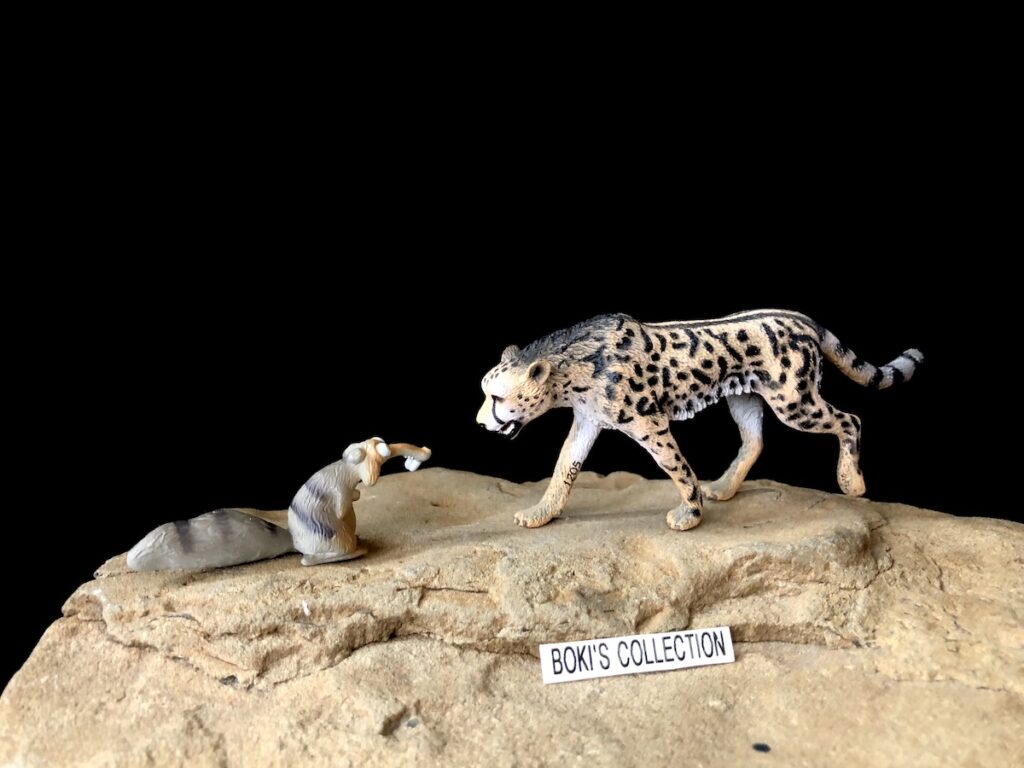
Perhaps one of the most impressive of all the wildlife that inhabit this place is the cheetah (Acinonyx jubatus). It is one of several big cats that still roam these places and also one of the most popular. Today, cheetahs are mostly found in Africa with a small remnant population precariously hanging on in parts of Iran. In the not so distant past, cheetahs used to roam a much larger range and had a wider distribution worldwide, inhabiting large parts of the middle east and Asia.
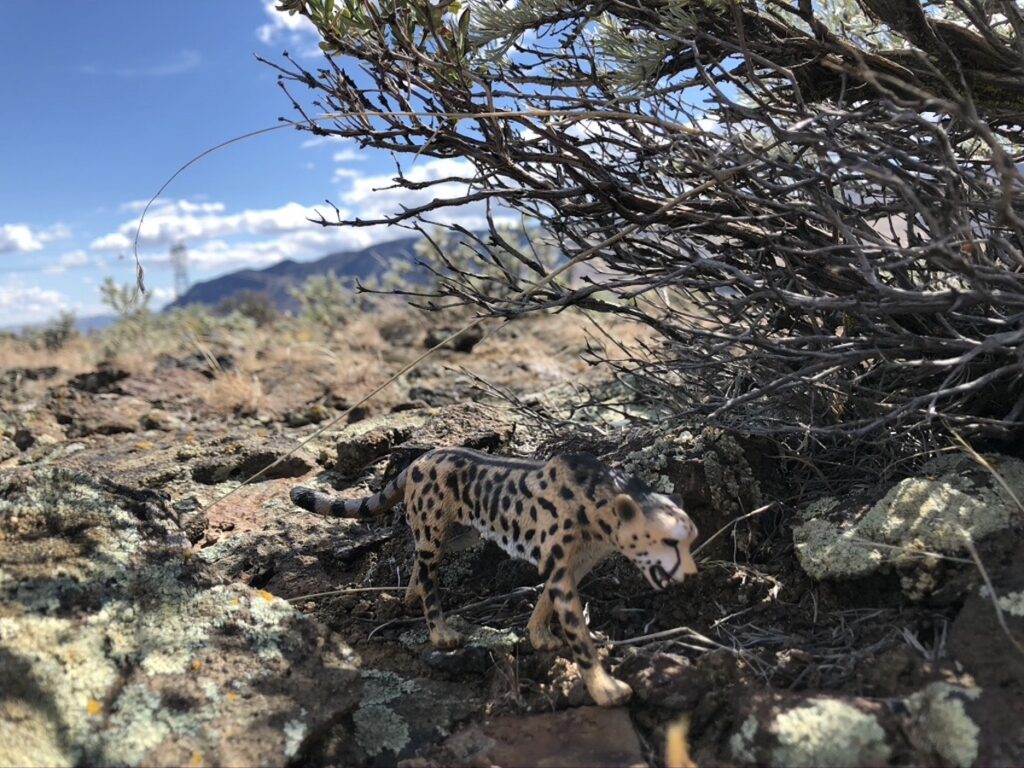
Today, there are four subspecies recognized, three of them found in Africa and the other in Asia. These subspecies are distinct and often diverged from each other by thousands of years despite their physical similarities. Cheetah is the fastest land mammal living today, this big cat can reach a top speed range of anywhere between 50 to 80 MPH! Cheetahs are one of the large spotted cats, along with the leopards and jaguars.
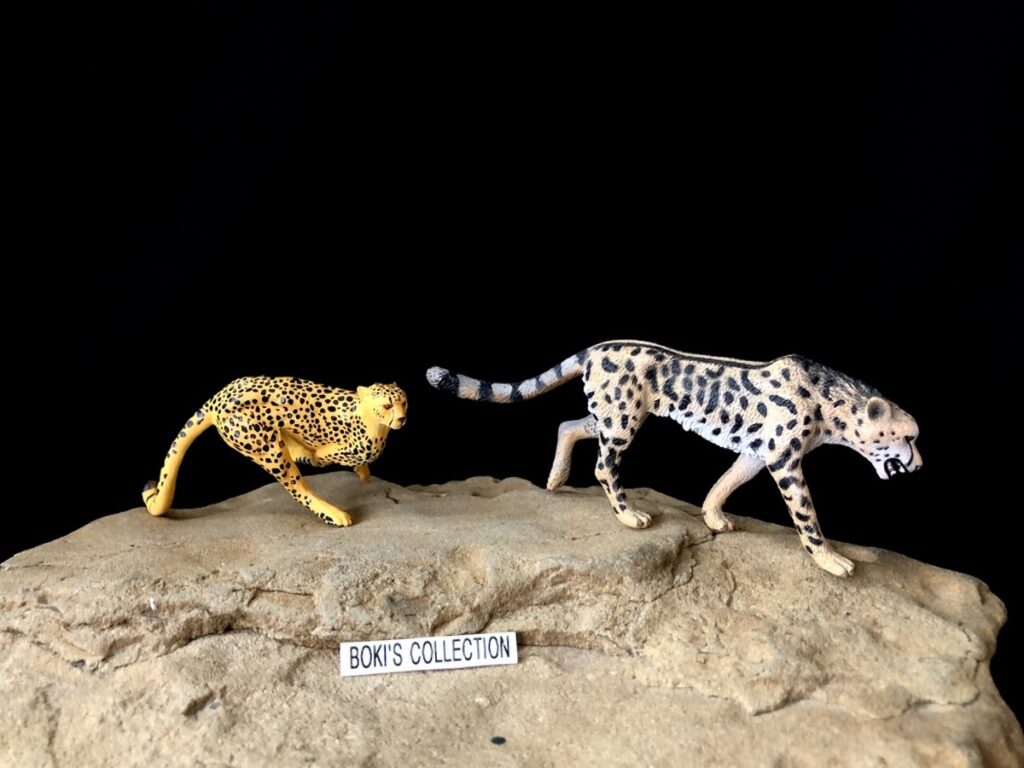
Their coat is a combination of light brown/orange and white. Black spots cover the entire body. All of the subspecies share the same spotted coat patter with just slight variation. But one unique mutation produced one of the most striking and distinctive color morphs that today is known as the king cheetah.
Cheetah toy figures are popular and almost all major companies that produce animal figure has one in its collection. But so far, none of the major toy brand has produced a king cheetah, although there is a small one from Kaiyodo/Takara Choco Q.

Well, in true CollectA form, they changed that and produced for the first time a large, mass-produced figure of this unique color morph instead of the standard one. This figure was released in 2014 and is very well made.

When first sighted back in 1926 in Zimbabwe, it was thought to be either a new species or some type of a hybrid. The animal has spot, but these spots merge to form stripes along the side of the body with three wide ones on its back that runs from the nape all the way down to the base of the tail.It is now known that the animal is not a new species or a hybrid, but a different color morph, similar to what we see in the melanistic (black) leopards and jaguars.
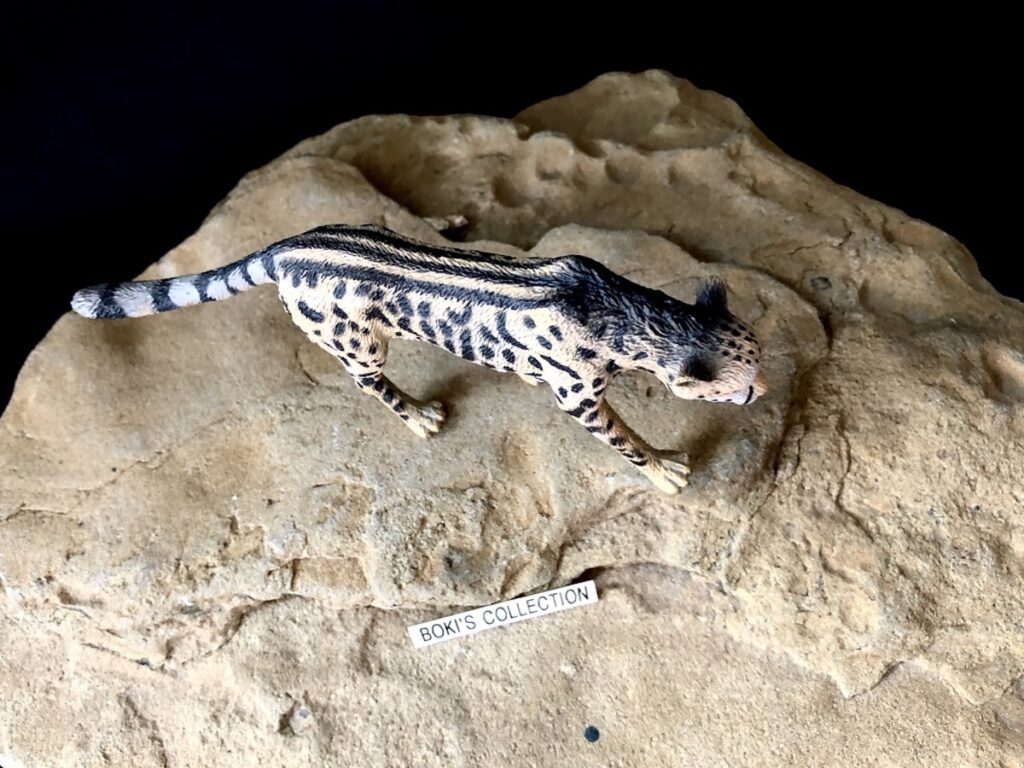
Like many of the big cats like tigers, jaguars, leopards, cheetahs, too, were once victim of fashion trends due to their beautiful coat.
This unique coat patters are beautifully replicated in this figure; the trio of wide black stripes on the back are clear and cleanly painted. The patterns on the side are a mix of some spots as well as horizontal semi-circle stripes. On the tail, we see black rings. The paint application is clean with no signs of sloppiness, at least on my figure. There are nice clear fur details all over the body that varies in length depending on which part they are located. The mane-like longer hair on the nape is also nicely sculpted and is colored black.

In a landscape full of other large predators such as lions, leopards, hyenas, and African wild dogs, cheetahs must compete for food. Despite their size, they are not fighters and are often bullied into relinquishing their hard-won meal by the other predators. Cheetahs rely so much on their speed and are built gracefully that they will not risk injury from a fight with some of the larger and more powerful predators. Instead, they will run away at the approach of another predator.

The figure is in an active pose, not running, more like leisurely walking. The mouth is open, but not in a growl, more like panting after a chase or cooling off from the heat. The distinctive black tear mark is cleanly painted on the face. The graceful greyhound-like body show nice muscle definition where you would expect to see some and are well sculpted and show great movement.In a market full of big cats of all types, it’s nice to see a representation of this unique color morph instead of the standard one.

Displayed alongside other big cats, this figure surely stands out and is a welcome addition to any collection and I highly recommend it. The size is similar to the majority of extant animal figures and will go well alongside the more common morph.
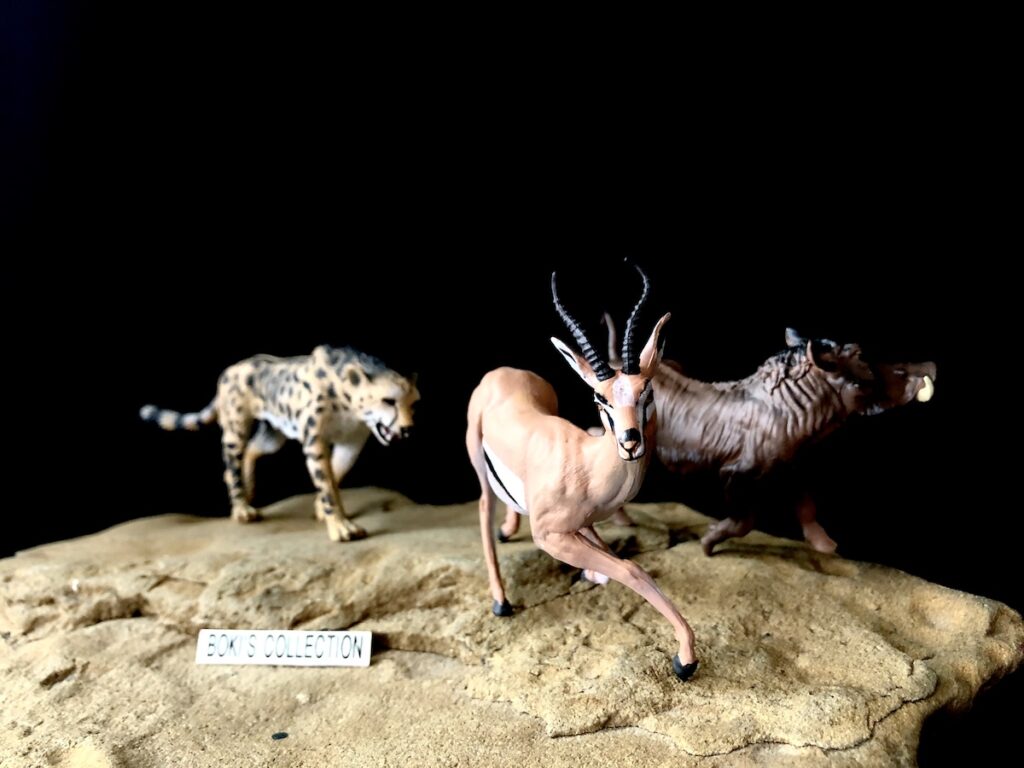
The Cheetah’s effective coat patter and its great speed, perfected over thousands of years is no match and could not protect them in the modern world. All across their shrinking range, they are vanishing at an alarming rate and all subspecies are now considered endangered. The few remnant population of the Asiatic subspecies is now reduced to less than 50 or so animals, making them one of the rarest large cats today.
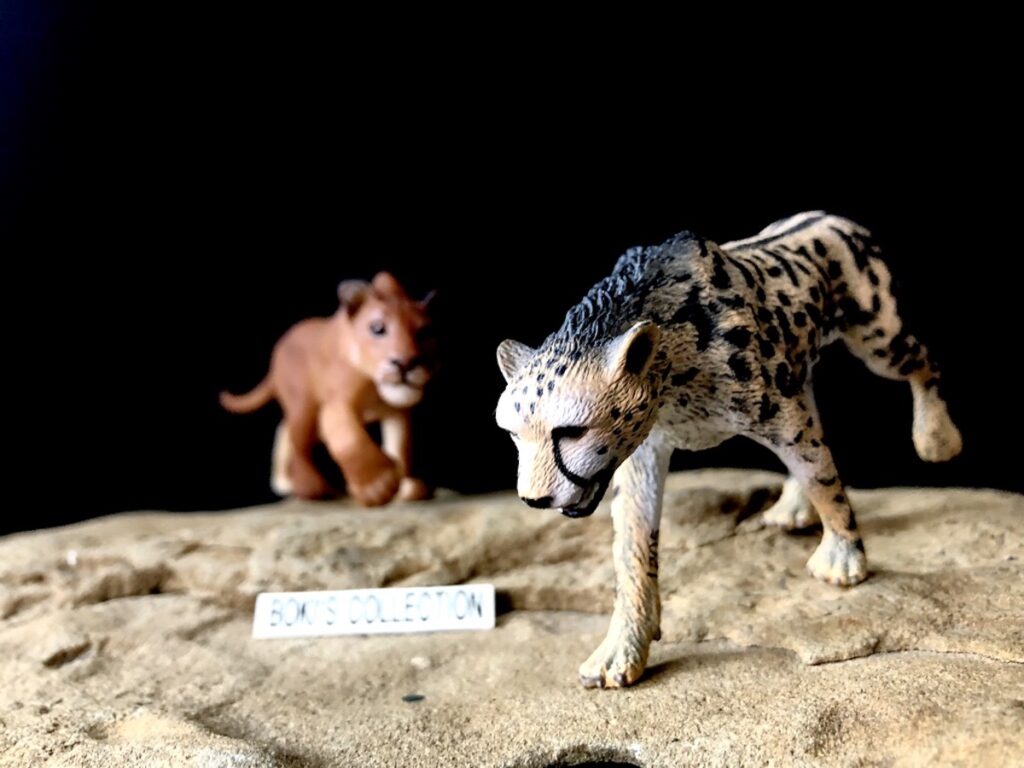
Unlike other big cats that maintain territories, cheetahs are nomadic, following migrating herds oblivious to man-made boundaries.This nomadic lifestyle makes it challenging to protecting them. Once outside the protection of parks and reserves, they are vulnerable and are persecuted and often fall victim to illegal hunting and snares.
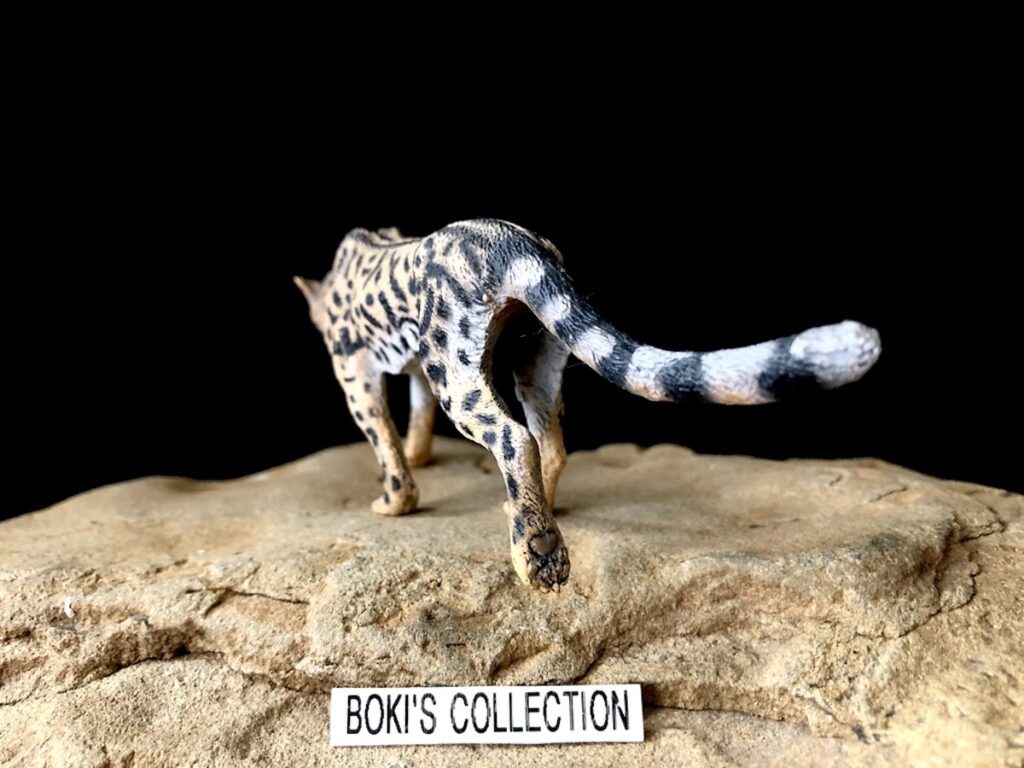
And like many other endangered species, cheetahs are losing their habitat faster than they can run. Political unrest, lack of protection, increased human population, low gene diversity, and in some area’s loss of prey animals are all coffin nails that are slowly sealing off its existence.

Although there are sizable captive populations worldwide, the need to protect them and all wildlife in the wild is at most important if future generation are to be able to see and admire this magnificent big cat as it races across the plains.
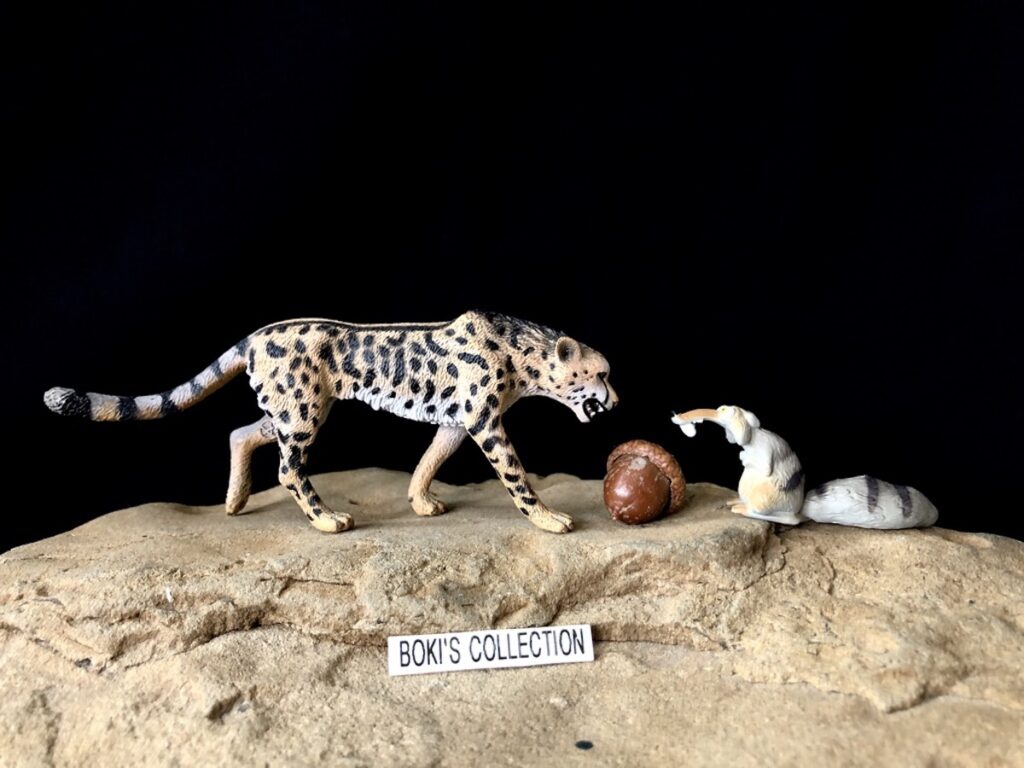
Well I hope you all enjoyed this review. Until the next one, stay safe and healthy, cheers!
Disclaimer: links to Ebay and Amazon on the AnimalToyBlog are affiliate links, so we make a small commission if you use them. Thanks for supporting us!




Wonderful review and pics as always!
I had seen CollectA’s ‘king’ cheetah, but honestly I did not know until doing some research after reading this review that it represents a specific genetic subtype of cheetah! I just thought that was CollectA’s way of advertising a dominant male cheetah (comparable to a silverback gorilla, for example). I assumed ‘king’ was terminology used in the social hierarchy of cheetahs. Neat. I have the Papo cheetah in my collection, but now I may get one of these king cheetahs after all :-).
Thanks. It’s a fascinating animal and glad it got a good figure finally.